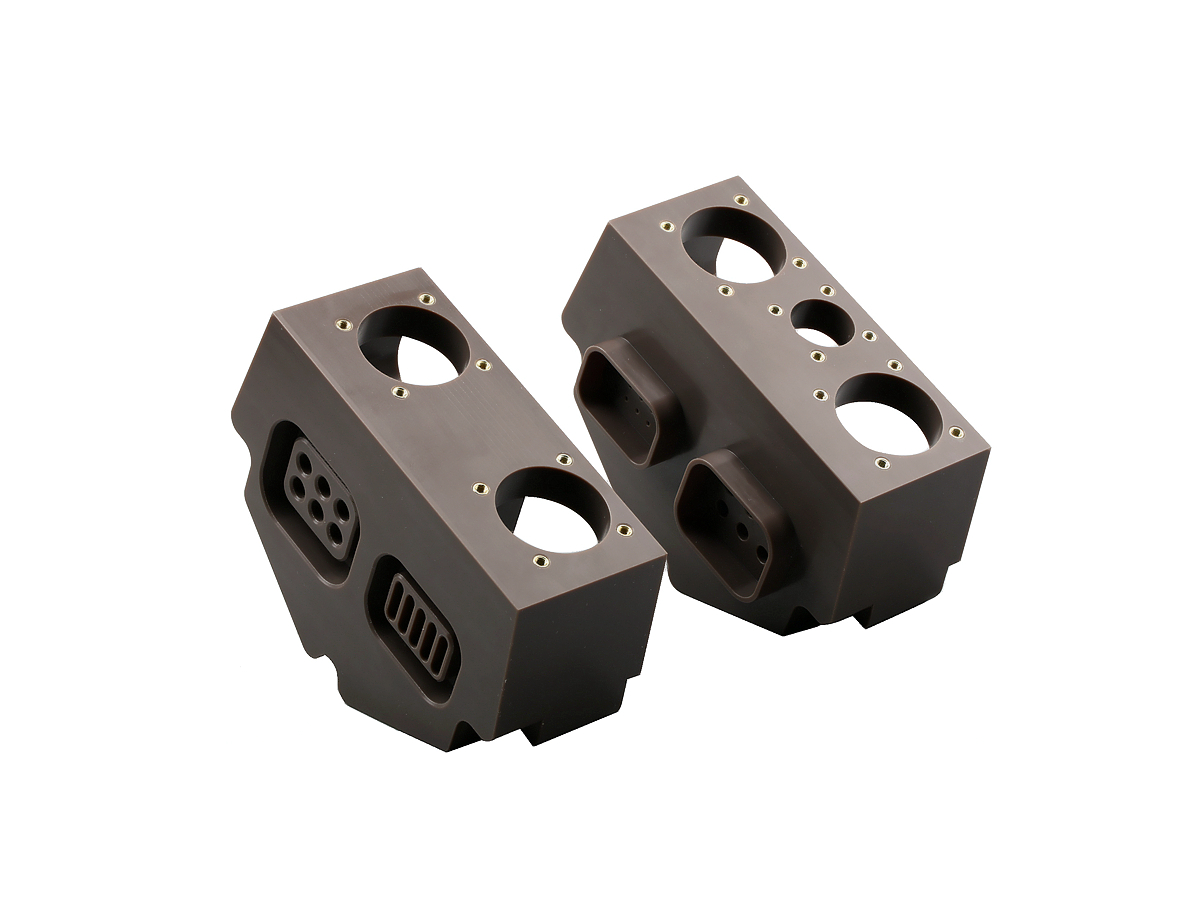Plastic Components at Scale: Mass CNC Machining for Rapid and Cost-Effective Production
Introduction
Mass CNC machining of plastic components offers manufacturers a quick, scalable solution for producing high-quality, cost-effective parts at a large scale. Plastics such as ABS, POM, and Nylon are widely used across industries like automotive, consumer electronics, and medical devices due to their excellent machinability, durability, and lightweight properties. With Plastic CNC Machining, manufacturers can produce plastic parts with precise dimensions and tight tolerances, ideal for high-volume production while maintaining cost-effectiveness and high quality.
Mass CNC machining allows companies to rapidly scale production, reduce lead times, and lower manufacturing costs without compromising part quality. Mass Production CNC Machining offers a streamlined solution for industries requiring large quantities of plastic components, providing fast turnaround times and ensuring the timely delivery of custom parts.
Plastic Material Properties
Material Performance Comparison Table
Plastic Material | Tensile Strength (MPa) | Yield Strength (MPa) | Hardness (Shore D) | Density (g/cm³) | Applications | Advantages |
|---|---|---|---|---|---|---|
40–70 | 30–60 | 70–85 | 1.04 | Automotive parts, electronics | High impact resistance, good machinability | |
60–90 | 50–70 | 80–90 | 1.41 | Gears, bearings, medical devices | Excellent wear resistance, low friction | |
80–120 | 60–100 | 75–85 | 1.14 | Automotive components, industrial parts | High strength, excellent chemical resistance | |
60–70 | 50–65 | 80–85 | 1.20 | Optical components, protective covers | High impact strength, optical clarity |
Selecting the Right Plastic for CNC Machining
Selecting the best plastic material for CNC machining depends on factors such as strength, impact resistance, and environmental conditions in which the parts will be used:
ABS: Ideal for automotive, electronic, and consumer goods components due to its high impact resistance, ease of machining, and good electrical insulating properties.
POM (Acetal): Suitable for mechanical components such as gears, bearings, and medical devices due to its low friction, wear resistance, and excellent dimensional stability.
Nylon: Recommended for parts exposed to high-stress environments, such as automotive components and industrial machinery, due to its excellent strength, wear resistance, and chemical resistance.
Polycarbonate: Best for parts requiring high impact resistance and optical clarity, such as protective covers, medical devices, and optical components.
CNC Machining Processes for Plastic Parts
CNC Process Comparison Table
CNC Machining Process | Accuracy (mm) | Surface Finish (Ra µm) | Typical Uses | Advantages |
|---|---|---|---|---|
±0.005 | 0.4–1.6 | Automotive parts, consumer products | High precision, versatile for complex shapes | |
±0.005 | 0.4–1.0 | Cylindrical parts, shafts | Consistent surface finish, high accuracy | |
±0.01 | 0.8–3.2 | Holes for fasteners, threaded components | Fast hole-making, high precision | |
±0.003 | 0.2–1.0 | Complex plastic parts, prototypes | High precision, multi-directional machining |
CNC Process Selection Strategy
The machining process selected for plastic components should align with the part’s complexity, tolerance requirements, and application:
CNC Milling: Ideal for creating complex geometries and intricate features in plastic parts such as automotive and consumer products. It provides high precision (±0.005 mm) and flexibility for various plastic materials.
CNC Turning: Best for cylindrical plastic components such as shafts, rods, and pins. Ensures high accuracy (±0.005 mm) and smooth surface finishes (Ra ≤1.0 µm), ideal for parts with rotational symmetry.
CNC Drilling: Essential for creating precise holes and threads in plastic parts, with high-speed capabilities and accuracy (±0.01 mm).
Multi-Axis Machining: Suitable for highly complex plastic parts requiring multi-directional machining, offering superior precision (±0.003 mm) and reduced production steps.
Surface Treatments for Plastic Parts
Surface Treatment Comparison Table
Treatment Method | Surface Roughness (Ra µm) | Corrosion Resistance | Max Temp (°C) | Applications | Key Features |
|---|---|---|---|---|---|
≤0.8 | Good | 300 | Electrical contacts, automotive parts | Enhanced conductivity, corrosion resistance | |
≤1.0 | Excellent | 200 | Consumer electronics, industrial parts | Durable, weather-resistant, aesthetic finishes | |
≤1.0 | Excellent | 450 | Aerospace, automotive parts | Increased hardness, wear resistance | |
≤1.0 | Excellent | 250 | Medical devices, food processing parts | Improved corrosion resistance, longer lifespan |
Surface Treatment Selection Strategy
Surface treatments are vital for enhancing the performance, durability, and appearance of plastic components:
Electroplating: Ideal for plastic parts that require enhanced conductivity and corrosion resistance, such as automotive components and electrical contacts.
Powder Coating: Best for plastic parts exposed to harsh weather conditions or requiring an aesthetically pleasing finish, such as consumer electronics or industrial components.
PVD Coating: Suitable for high-performance plastic components in aerospace or automotive applications that require increased hardness and wear resistance.
Passivation: Recommended for medical device parts and food processing components, improving corrosion resistance and ensuring the longevity of the parts.
Typical Plastic Rapid Prototyping Methods
Effective prototyping methods for plastic components include:
CNC Machining Prototyping: Provides fast, high-precision production of plastic parts in small quantities for testing and iteration.
Plastic 3D Printing: Ideal for creating complex shapes and rapid iterations, especially for custom designs or low-volume production.
Rapid Molding Prototyping: Cost-effective for producing moderate-complexity plastic parts before transitioning to full-scale production.
Quality Assurance Procedures
Dimensional Inspection: ±0.002 mm accuracy (ISO 10360-2).
Material Verification: ASTM D638, ASTM D256 standards for plastic materials.
Surface Finish Assessment: ISO 4287.
Mechanical Testing: ASTM E8 for tensile and yield strength.
Visual Inspection: ISO 2768 standards.
ISO 9001 Quality Management System: Ensuring consistent quality and performance.
Key Applications
Automotive: Dashboard components, interior parts, connectors.
Consumer Electronics: Enclosures, housings, connectors.
Medical Devices: Surgical tools, medical enclosures, diagnostic equipment.
Industrial Equipment: Gears, valves, pumps.
Related FAQs:
Why is mass CNC machining ideal for plastic components?
What plastic materials are best for CNC machining in automotive and consumer electronics?
How do surface treatments enhance the performance of plastic parts?
What are the advantages of CNC machining for plastic parts in high-volume production?
How does low-volume CNC machining support prototyping for plastic parts?

